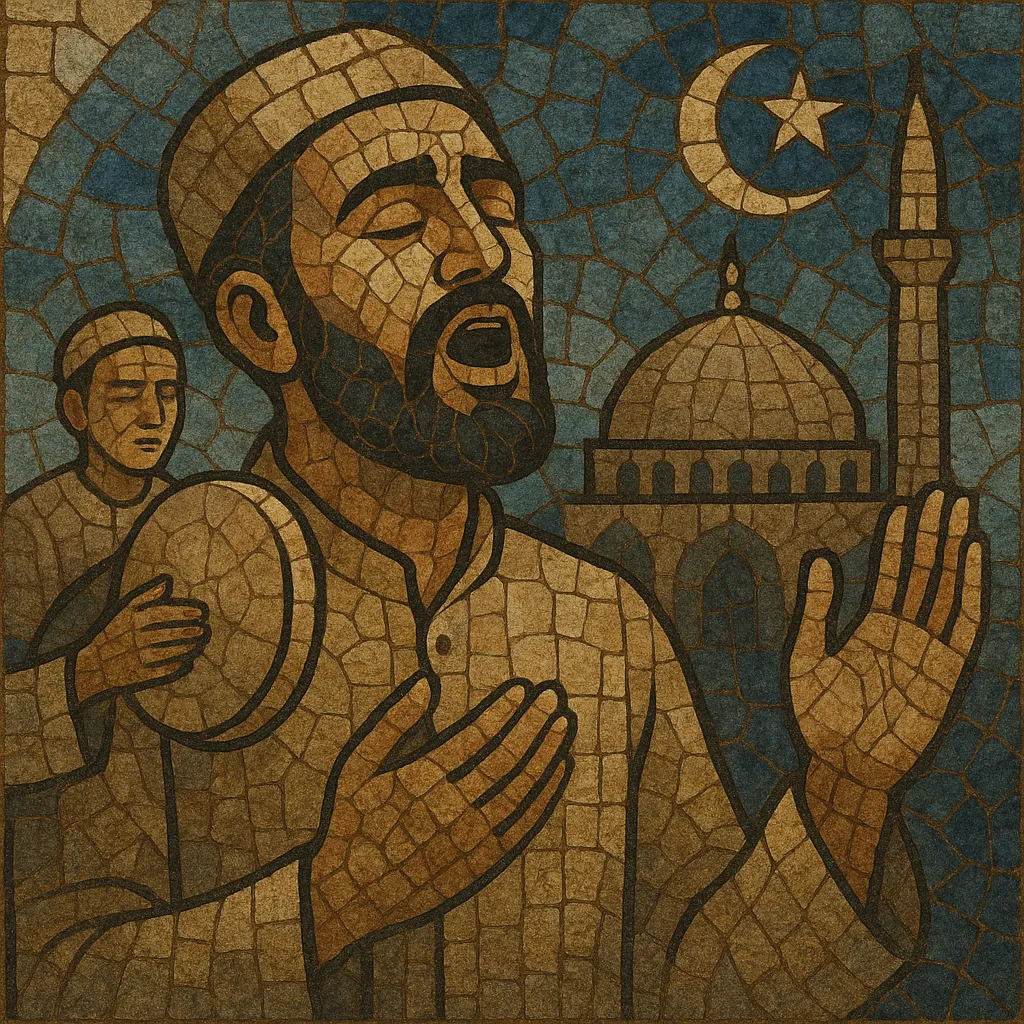Nasheed is a form of Islamic devotional song centered on the human voice and text. Traditionally performed a cappella or with minimal percussion (most commonly the frame drum/duff), it conveys praise of God, love of the Prophet Muhammad, ethical instruction, and communal or spiritual reflection.
Stylistically, nasheed draws on melodic contours associated with Middle Eastern maqām traditions and favors clear diction, call-and-response refrains, unison choruses, and melismatic ornamentation. While a conservative practice discourages melodic instruments, a contemporary current permits fuller pop arrangements, resulting in a spectrum from austere, chant-like performances to polished, radio-friendly productions.
Nasheeds are sung in many languages—Arabic, Urdu, English, Turkish, Malay/Indonesian, and others—allowing the genre to function as a global bridge between traditional religiosity and modern musical idioms.
Nasheed practice traces to the earliest Islamic period, when pious songs and poetic recitations were used for devotion and communal cohesion. Historical accounts and hadith traditions reference vocal praise and the permissibility of the duff at festive or religious occasions, setting a precedent for voice-centered performance. Over subsequent centuries, munshidūn (specialist devotional singers) developed regional styles, often informed by Arabic prosody and the modal logic of local sacred and courtly musics.
As Islamic cultures expanded across the Middle East, North Africa, Anatolia, Central and South Asia, devotional singing diversified. Sufi orders incorporated spiritually oriented poetry into rituals, while public praise-poetry (madīh) and didactic songs flourished. Though instruments varied by locality, a strong a cappella ethos persisted in many contexts, preserving the primacy of text and collective participation.
Radio, recording, and mass education in the 20th century broadened access to religious song. Reformist trends emphasized sobriety and textual clarity, encouraging percussion-only or purely vocal arrangements, while other communities continued to accept expanded instrumentation. By the late 20th century, nasheed groups adapted contemporary harmonies and studio techniques to reach youth audiences while keeping pious content central.
From the 1990s onward, labels and artists professionalized nasheed production, releasing multi-language albums and touring internationally. Satellite TV, YouTube, and streaming amplified the genre’s reach, with artists from Europe, the Middle East, Africa, and Southeast Asia building large audiences. Parallel to mainstream devotional popularity, political actors have also employed anashīd for mobilization and propaganda; however, the core of the genre remains devotional, educational, and community-focused. Today nasheed exists on a continuum—from minimalist, chant-like vocals to polished pop-inflected tracks—reflecting diverse jurisprudential views and global musical exchange.


